Coral Rasa to help improve monitoring of coral reefs
by: Ecofriend, 2011-07-22 05:30:07 UTC
Piyali Narayan Swamy:

Coral RasaDesigned by Derek Bennion
Coral reefs form one of the most diverse ecosystems on our planet. To protect the reefs from further damage from human carelessness, designer Derek Bennion has conceived the Coral Rasa. It’s a digital monitoring device specially formulated to observe the condition under the sea. The device can prove to be of tremendous help for a variety of reasons help owing to its both visual and audible monitoring assistance.
Picture Gallery
Coral Rasa by Derek Bennion is designed to protect world’s coral reefs
Motorola Coral Rasa by Derek Bennion can ease the situation greatly to convey public consciousness to the importance of coral reefs and their recent situation. Derek is final year student for Industrial Design, from College for Creative Studies, Detroit, MI. The Coral Rasa project took shape when he participated for the Motorola Sponsored Studio - Fall 2010, for the Environmental group. His project to design a monitoring device for the coral reefs won huge accolades and the first place in the competition. The name was inspired by the Great Barrier Reefs in Indonesia, which is also the largest system of coral reefs.
Rasa in Indonesian language means sense. The device consists of three parts: the base which is made as a tri-spiked leg to anchor well on the oceanic bed, the body which houses the battery and the hard drive, and the head which houses the hydrophone, camera, lens, water sampling tray, water tester, light housing, LED and the buoy.
The camera mounted on the device rotates at a 360 degree angle to gain complete access to its surroundings. It records one hour of footage a day for three weeks and broadcasts eight hours of footage a day over the web. The camera shuts down during the night. The water sampling tray rotates once around each day to accommodate a new sample every time and tests for herbicides, pesticides, nutrient, fertilizers, nitrogen, phosphorus, and oil. The hydrophone is used to pick up the acoustics in the surrounding coral reef areas. This allows the user to determine the species living in the area and their traffic movement each day. The Coral Rasa is coated by thermo chromic paint to sensitize it to the coral bleaching process. It will show a change in color to help adopt remedial measures sooner than otherwise was possible.
The product is expected to be of great use for environmental organizations, community groups, or even local government who realize the importance to protect coral reefs.
Via: Tuvie


 Brooch with solar panels will heat your cuppa on a picnic
Brooch with solar panels will heat your cuppa on a picnic
by: The Design blog, 2011-07-21 13:07:47 UTC
Asmita Prasad:

Solar Heater BroochSolar Heater Brooch by Lorena Aguirre Coughanour
My mother always nags me to invest in gold jewelry instead of the junk that always end up buying because she thinks ornaments should serve more than one purpose. Well, I guess I might just give her this incredible Solar Heater Brooch next Mother’s Day because this is probably the most multi-functional piece of jewelry ever made (barring the hair pins used as weapons in Samurai movies, of course!). The first runner up at the Harmony Jewelry Design Competition organized by Hoover & Strong, the Solar Heater Brooch is a stunning design that turns a meek fashion accessory into a portable drinks warmer.
Picture Gallery
Brooch can be used as a solar heater for tea or coffee
The competition brief required the design to represent an eco-message along the lines of recycling, conservation, sustainable energy and environmental clean-up. The design had to be made with HARMONY Recycled Silver. With items being in the shape of a pendant, charm, bracelet, fob or pin, the creation had to be a wearable design that could be produced wholesale for less than $25, inclusive of labor and material costs.
The Solar Heater Brooch was created by metals and ceramics artist, designer and architect Lorena Aguirre Coughanour who works under the brand name Chita Design. The brooch was conceptualized as trendy fashion-forward accessory that could also double up as a solar heater when opened and placed over a mug. The brooch is made up of mirror polished Harmony recycled silver with printed plexiglass detailing and can be fastened to a dress via magnetic tabs. At 7.5 x 10 x 10cm, the brooch is anything but discreet, but the eco-cred of the design more than make up for its chunky size.
To use as a brooch, users simply have to separate the two pieces, place the bottom half under the dress and the other half over it and press the tabs together to secure. To use as a solar heater, the silver piece on the brooch has to be lifted and plastic loop pulled down. The electric loop can then be fastened into the nudges and the heater can then be placed over a mug of tea or coffee to heat it. The open panels act like a tanning mirror, absorbing and redirecting the sunrays into the mug, letting the liquid inside warm up with the radiated heat.
Sounds like an interesting thought, although we hope the designer can come up with a way to cool liquids as well so that people can chill their cocktails using this amazing idea when picnicking in the summertime.
Via: Chitadesign


 A Globe-Trotting Tour of Sustainable Design
A Globe-Trotting Tour of Sustainable Design
by: TreeHugger Design, 2011-07-20 13:00:00 UTC
 A paper-waste recycling workshop in Brazil. Photo: "It's Not Easy Being Green."
A paper-waste recycling workshop in Brazil. Photo: "It's Not Easy Being Green."
From the organizers of a prestigious annual competition in
Australia to Balinese
craftspeople selling their wares on the street, the world is full of people designing a better world, a little bit at a time. Two European designers are meeting as many as they can on a globe-trotting tour of sustainable des...
Read the full story on TreeHugger
Florent Bouhey Fayolle’s Sun Container is an Elegant Solar-Powered Heater
by: Inhabitat , 2011-07-20 18:20:31 UTC

French student Florent Bouhey Fayolle created the Sun Container: an elegant freestanding radiator that uses sunlight as its power source. Inspired by the Trombe Wall system, this 120w passive solar heater draws sunlight through the glass cloche and stores heat in its slate fins before releasing it through the vents in the top of the glass. It can collect warm sunlight during the day and release warm air once the temperature has cooled.




Read the rest of Florent Bouhey Fayolle’s Sun Container is an Elegant Solar-Powered Heater
Permalink |
Add to
del.icio.us |
digg
Post tags: "energy efficiency", "solar energy", alternative energy, eco design, florent bouhey fayolle, green design, green gadgets, radiator, renewable energy, solar heater, solar heaters, solar heating, sun container, Sustainable Building, sustainable design, trombes wall
Solar Plant in Spain Generates Electricity for 24 Straight Hours
by: Eco Geek Latest, 2011-07-06 18:43:11 UTC

Here's some really exciting renewable energy news. Spain's Gemasolar concentrating solar power plant just became the first solar power plant to generate power for 24 continuous hours.
The plant uses a Power Tower design where a field of mirrors concentrate the sun's heat onto a boiler in the central tower. That boiler creates steam which turns a turbine. None of that is out of the ordinary when it comes to concentrated solar power, but the Gemasolar plant is the only one in the world to use molten salt as a heat transfer fluid, which allows for the storage and generation of electricity even once the sun goes down.
The 19.9 MW capacity plant on average is able to generate power for 20 hours a day and during the summer, many days will see 24 full hours of energy generation. The molten salt storage really makes a big difference here. Compared to the larger 21.2 MW Solarpark Calaveron plant that generates about 40 GWh per year, the Gemasolar plant generates almost triple that with 110 GWh per year.
Power storage is one of the major issues facing the growth of renewable energy generation. The wind isn't always blowing and the sun isn't always shining, but innovative storage solutions like the one at Gemasolar will be what turns renewable energy into not just a clean source of electricity but also a reliable one.
via Grist
 Caltech Study Says Vertical Axis Wind Turbines 10X More Efficient Than Horizontal Axis Turbines
Caltech Study Says Vertical Axis Wind Turbines 10X More Efficient Than Horizontal Axis Turbines
by: Eco Geek Latest, 2011-07-13 19:13:21 UTC

Wind energy production has so far been dominated by the horizontal axis wind turbine (HAWT). They can be scaled up to reach high in the air where the wind blows faster and produce a lot of energy per turbine (a 10 MW turbine is not far away), but researchers at Caltech say that vertical axis wind turbines (VAWTs) may actually be the better choice.
A recent study of turbine placement and output found that because VAWTs can be placed closer together, they're capable of generating ten times as much energy per square meter than HAWTs.
In a series of field tests that placed six VAWTs in different configurations, it was found that a spacing of four turbine diameters apart (about five meters) got rid of any aerodynamic interference between the turbines. HAWTs require 20 turbine diameters of spacing in order to eliminate aerodynamic interference, equaling more than a mile between each turbine. The six VAWTs were able to produce 21 to 47 watts of power per square meter, while a comparable HAWT farm only produces about two to three watts per square meter.
The study also found that having each VAWT spin in the opposite direction of its neighbor allowed them to spin faster because the opposing spins reduced the drag on each turbine, which upped their efficiency even more.
To add to the list of benefits, VAWTs are also cheaper, smaller and less intrusive, allowing them to be installed in lots of places where large HAWTs just wouldn't do.
via Caltech
 Car2go Launches All-Electric Car Sharing Program in San Diego
Car2go Launches All-Electric Car Sharing Program in San Diego
by: Eco Geek Latest, 2011-07-14 16:17:04 UTC

Car2go, a car sharing company owned by Daimler, is launching North America's first completely all-electric car sharing program in San Deigo by the end of this year.
Car2go has successfully started car sharing programs in four major cities in the U.S. that include Smart Fortwo gas engine cars, but the new San Diego program will consist of 300 Smart Fortwo plug-in EVs all equipped with solar roofs that can go 84 miles per charge.
Luckily, participants in the program won't have to search for a charging station because 1,000 Blink EV charging stations are due to be installed in the city by the end of the year as well.
Car2go is a free-floating car sharing service that allows its members to spontaneously rent cars without fixed pick-up and return times or locations -- kind of like a bike share program, but with cars.
via Engadget
 Alessi Wins Two Green Good Design Awards
Alessi Wins Two Green Good Design Awards
by: Sustainable Design News, 2011-07-14 14:26:14 UTC
 Alessi received two Green Good Design Awards from the Chicago Athenaeum Museum of Architecture and Design, for the "Seed safe" designed by Mart� Guixe, and the "Blow up - Bamboo collection" designed by the Campana Brothers.
Alessi received two Green Good Design Awards from the Chicago Athenaeum Museum of Architecture and Design, for the "Seed safe" designed by Mart� Guixe, and the "Blow up - Bamboo collection" designed by the Campana Brothers.
Both of the winning projects combine Alessi's distinctive aesthetic and perspective with a sustainable design approach.
The porcelain "Seed safe," by Catalan designer Mart� Guixe, was designed with the hope that future generations would collect and re-plant seeds rather than discard them, thus starting an ongoing dialog about environmental responsibility.



Sustainable Lessons From Around the World
by: Sustainable Design News, 2011-07-14 04:10:43 UTC
 Paula Rache and Aart van Bezooyen are two designers traveling around the world in search for sustainable solutions in materials and design.
Paula Rache and Aart van Bezooyen are two designers traveling around the world in search for sustainable solutions in materials and design.
Imagine skateboards and bicycles made of bamboo, online tools for more sustainable packaging, a new educational concept called Green School for children, and locals sharing ideas on sustainability with Green Drinks.
After an exiting first four months in eight different countries it is time to look back and share what they have learned so far.



French Visionary Starck’s Advice to Designers: Create Fewer Useless Products
by: Gadget Lab, 2011-07-19 16:58:46 UTC

French designer Philippe Starck is a leading innovator in the industrial and interior design fields. Photo courtesy of Philiippe Starck
Editor’s note: From hard drives to motorcycles, and from chairs to buildings, Philippe Starck has designed just about every kind of product out there. In the first of a regular series of columns, the seminal designer shares his vision on the state of design and his creative drive.
One of the questions I’m most frequently asked is what I think is the best piece of design ever. Quite simply, it’s us. Human beings.
I am lazy, sadly, like everybody, and a coward, like everybody. But nobody was ever hurt by me.
Mankind is the only species that has taken control of the speed and quality of its evolution. We are astonishing.
Of all the animal species, we are the only ones who said, “Why don’t we rise up and better ourselves?” We are so intelligent in different ways. There is no materiality, no product, which comes close to our level of intelligence and our inherent design perfection.
Ironically, we are also responsible for the world’s worst idea — something that continues to set back scientific exploration. I’m talking about religion. Millions of people today suffer and die because some people use religion to control other people. It’s horrible. Believing is the negation of our intelligence. You are a stupid coward if you say, “Oof, it’s not me, it’s God.” This removes any self-responsibility.
Our world has seen an explosion of new challenges, vital challenges. Design can help a little, but sadly design cannot save lives. That’s why, for me, good design doesn’t exist anymore. In fact, design has, for some decades, been rather useless. Twenty years ago it was perhaps amusing to waste time talking about the beauty of a lamp. Now it’s an obscenity.
There was a time when you could say that good design produced a concept or ideas to help you and your tribe have a better life. Good design was about vision, creativity, deep modernity, respect, intelligence, quality and humor. Voila!
Today, we see very talented, intelligent designers who use their skills to create useless products, which are developed not to help people but to put money in the pocket of companies, and to take money out of the pocket of a “target consumer.” It’s a very cynical way to work, and done with greed and no respect. We need to design things that are more ecological, more social.
And, yes, we need to produce less.
I have no regrets that, over the years, I’ve designed what some might deem frivolous items. That was before. I can’t alter the past. But I have changed my views as the world has changed. In many ways, I like to think I was a little ahead of the curve. Don’t forget, 15 years ago I started designing and selling gas masks to protect people from a bacteriological, atomic or chemical accident. Everybody was laughing at the idea then. Now, nobody laughs and everybody wants one!
You cannot regret what you are. It’s not a positive way of thinking. I am lazy, sadly, like everybody, and a coward, like everybody. But nobody was ever hurt by me. Perhaps, since I believe we should all consume less, I should also design less. But I’m obliged to continue. Ten years ago, when I had the exhibition at Centre Pompidou in Paris, a journalist told me that he’d worked out that roughly 300,000 people depend on my creations – from factories to hotels to apartments – for work. I cannot decide to simply stop that, to just jump out the window. Instead, I can take a different approach.
I’ve spent years doing democratic design, raising the quality and killing the price to give good design to everybody. It’s done. We’ve won the battle. It’s taken 30 years, but it’s done.
Now I’m turning my attention to democratic ecological design, working with a company to develop high quality, high technology, prefab eco-friendly houses. I will also design an electric car, which will be made by a small French company.
Am I proud of the work I have done? No. My mother, Jacqueline, was deeply creative, and she taught me the elegance of life. My father, André, was deeply creative and one of the best aircraft engineers of his generation. Next to them, I don’t feel proud to be a designer.
I don’t care if people tell me: “Oh, your last chair was so beautiful,” because I know they will say the opposite the following year when the trends change. But when people say, “Thank you for what you are, for what you do for us,” I feel good. Not proud, but good.
You don’t choose creativity – it chooses you – and I cannot stop creating. I don’t live my life. I live only for the future life of my tribe.
Philippe Starck is design director of yoo, an interior and residential design firm.

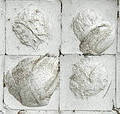

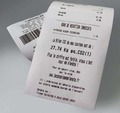
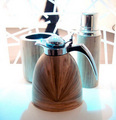

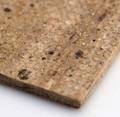
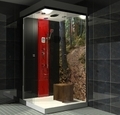
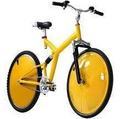
Comments by our Users
Be the first to write a comment for this item.